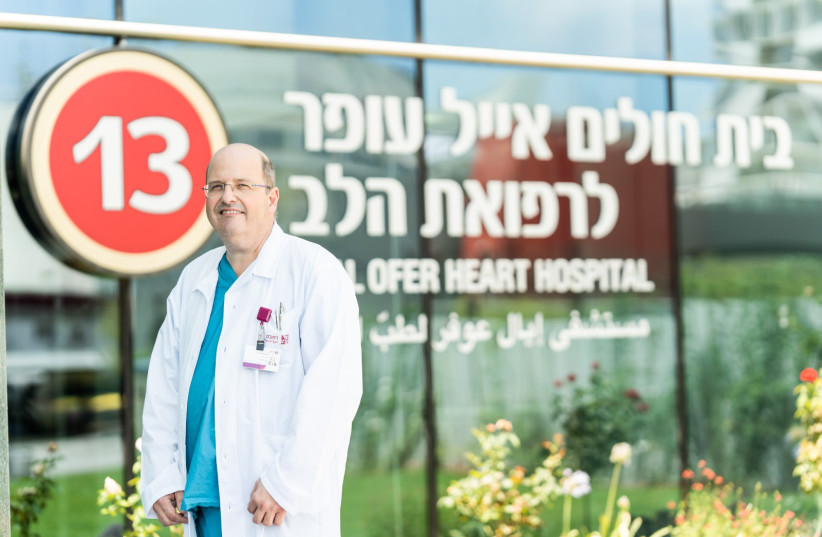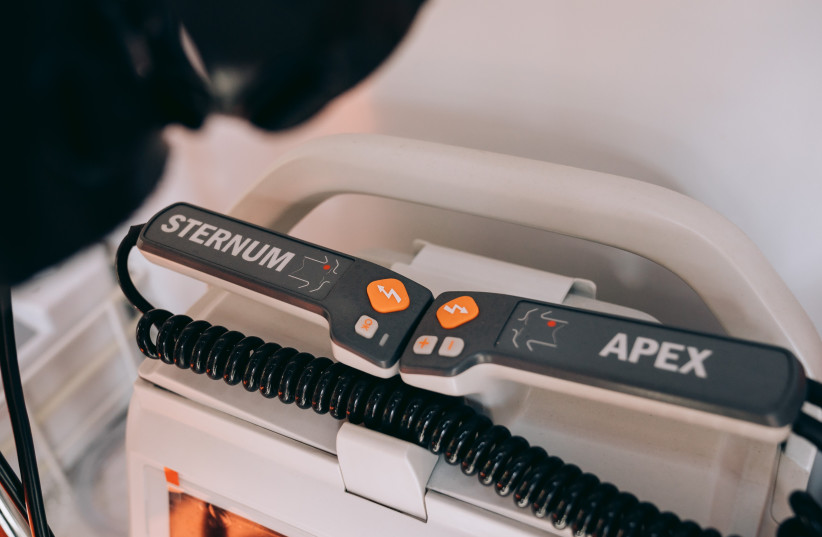Biological defibrillator to treat irregular heartbeat developed by Rambam, Technion
This breakthrough will eventually treat only diseased and not healthy cardiac cells, through a receptor causing a biological process in the heart.
Researchers at the Rambam Healthcare Campus and the Technion-Israel Institute of Technology in Haifa have succeeded in using genetic engineering to treat heart rhythm disorders in their labs. The researchers were able to produce a receptor causing a biological process that regulates the electrical activity in the heart.
Patients will be able to activate the receptor themselves through a tiny dose of medicine that will act only on a specific area of the heart and only in real time of a heart rhythm disturbance. This, they say, is a groundbreaking development: a kind of biological defibrillator.
Many suffer from heart rhythm disorders
Cardiac arrhythmias are characterized by a feeling of beats that are out-of-rhythm, missed, too fast or slow that exceeds the norm – which is between 60 and 100 beats per minute. Hundreds of thousands of Israelis suffer from heart rhythm disorders, most of them as a result of a disruption in electrical activity. This causes chest pain, shortness of breath, fatigue, dizziness and weakness to the point of fainting; they can even be life-threatening.
Researchers all over the world have been trying to find solutions to regulate the disorders, until now without success – even though there are various drugs that change the electrical activity of the heart and are used to treat arrhythmias. But these drugs affect all parts of the heart and other organs, working on both healthy and diseased cells, so their effectiveness is very limited. They also have side effects, some of which are severe and may worsen the patient’s condition and even cause death.
 Prof. Lior Gepstein (credit: NITZAN ZOHAR)
Prof. Lior Gepstein (credit: NITZAN ZOHAR)“Medications for the treatment of cardiac arrhythmias are ineffective and sometimes may themselves cause an arrhythmia in another area of the heart, which may be more serious than the original arrhythmia they were trying to solve,” explained Prof. Lior Gepstein, director of the cardiology and research departments at the Rambam. For this reason, treatment for atrial fibrillation often boils down to giving anti-coagulant drugs – to prevent the formation of life-threatening clots instead of trying to deal with the problem itself.
The research has been published in the journal Circulation Research under the title “Chemogenetics for Gene-Therapy-based Targeted Cardiac Electrophysiological Modulation.”
“Our solution is to genetically engineer a receptor and insert it into a certain point in the heart where it will connect to specific cells responsible for the electrical activity of the heart but will be in a dormant state,” According to Yehuda Wexler, a doctoral student in Gepstein’s lab who led the research.
“The goal is for patients to take the drug themselves, when the arrythmia is taking place,” he said. “The drug will connect to the receptor, which will wake them up and activate the cells that regulate the electrical activity only in the place where the arrhythmia occurs and not in the entire heart.”
THE FINDINGS were presented for the first time at the recent annual research day conducted by Rambam’s research department where 120 studies in various stages of research were submitted . All of them were launched after the doctors recognized a real need that emerged from the field.
The study encourages doctors to engage not only in basic research to find biological mechanisms for diseases, but also to carry out translational research that finds practical solutions for various health conditions. “To this end, Rambam devotes comprehensive resources to achieving this goal. In recent years, we have seen the formation of connections among the hospitals, academia and industry that have led to inventions in the field of pharmaceuticals and medical devices, and we will continue to encourage this,” Gepstein declared.
Over 98% of the patients who have irregular heartbeat can be treated with EP study and RFA
THIS PAGE WAS POSTED BY SPUTNIK ONE OF THE SPUTNIKS ORBIT BLOG


No comments:
Post a Comment
Stick to the subject, NO religion, or Party politics